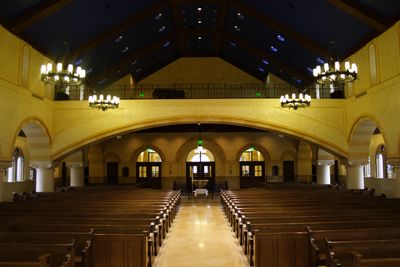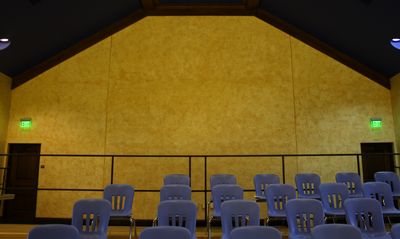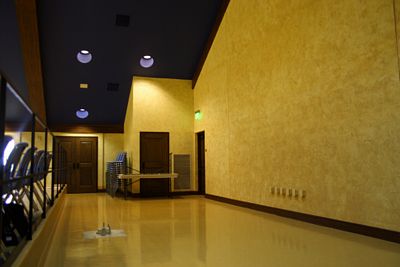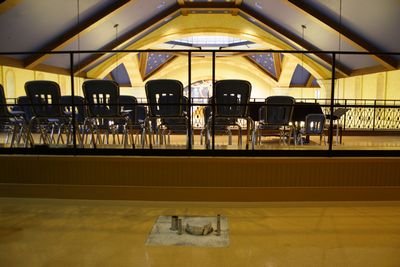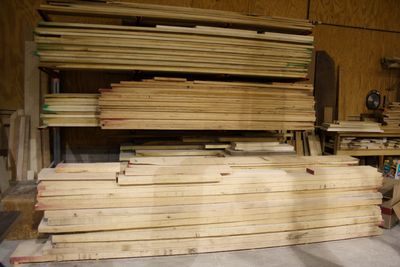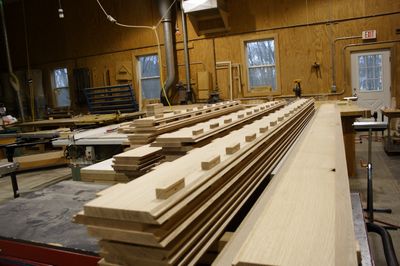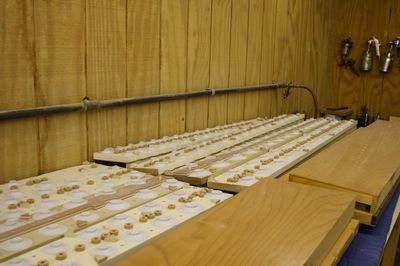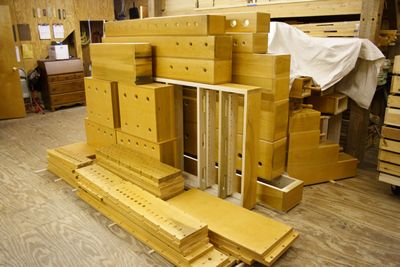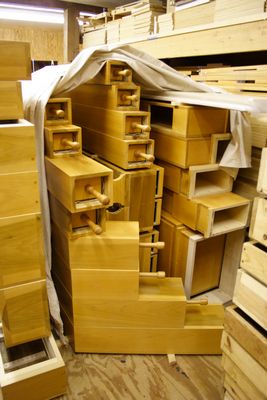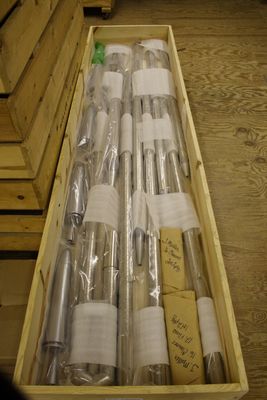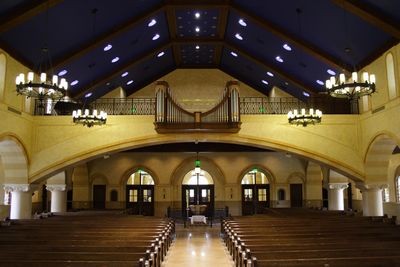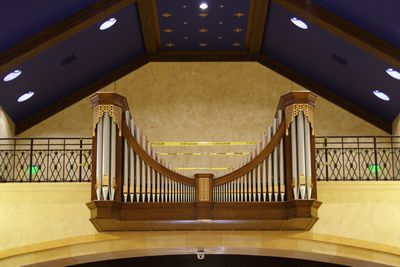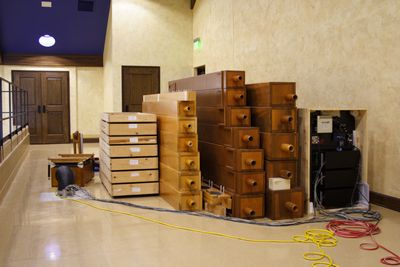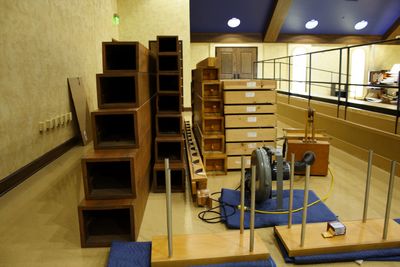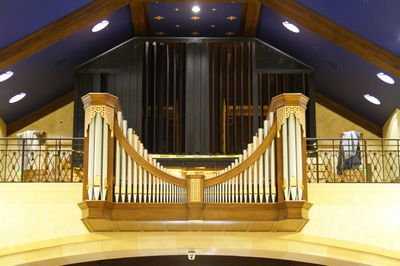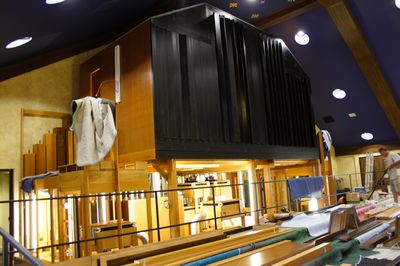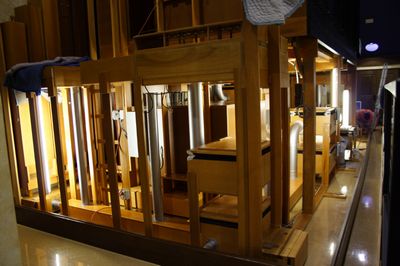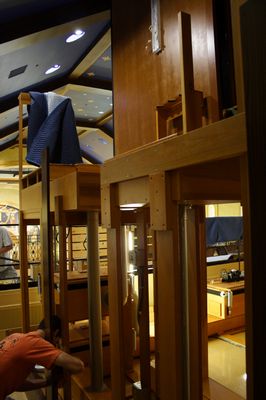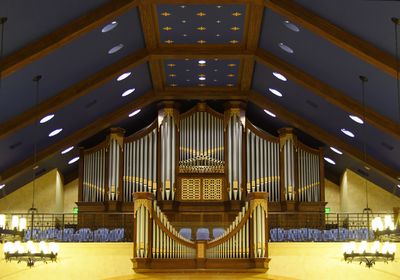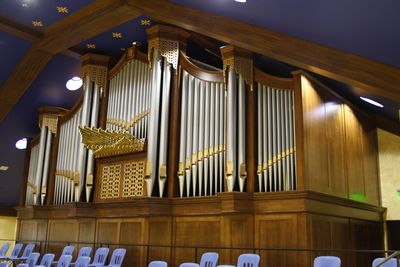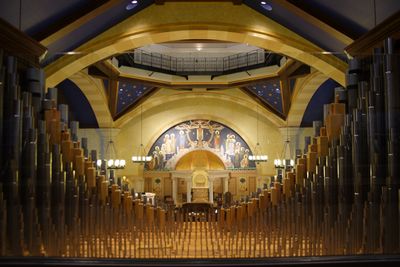Westerville, OH
3/54 Muller
2014
| Back to St. Paul Catholic Church Muller index | Back to pipe organ profile list | Back to pipe organs index | Back to N8RRB home | E-mail the webmaster |
From start to finish
Click on the photo to see a larger image
Pipe organ installations are no simple task. From the initial sketch on paper to the tuning and tonal finishing of the instrument in its ultimate home, they require an incredible amount of time and effort to complete. While some of the technology around the pipe organ has improved, there's still a significant amount of work done by hand. The following highlights a few of the stops along the journey of this pipe organ.
When St. Paul parish decided to build a new church, the money needed for a pipe organ was not available. However the parish knew that at some point one would be installed. Therefore it built into the design of the building several preparations for the organ. These included structural beams for a rail division in the loft, a pipe to serve as the wind supply for the rail division, electric preparations and probably as important as anything, extra mass in the walls around the loft to ensure that sound from the organ is reflected into the room rather than absorbed by the walls and ceiling.
Here are some photos of the loft space prior to the organ's installation.
Back at Muller Organ Company's shop, the staff was busy crafting the woodwork for the case, air reservoirs and wind chests. Most of the pipes were built by A.R. Schopps of Alliance, OH but using specifications provided by Muller. Here are some photos of various parts of the organ at the shop.
Normally an organ builder will fully assemble the organ in its shop before erecting in its final destination. Because the Positive Division is on the front of the loft, this was assembled and installed first.
Next we see the main organ being built. The two chambers are on the top level with the air lines, wind chests, blower and other organ equipment on the bottom level. Only the bass pipes along the back wall have been installed at this point.
Assembled and tuned, the organ is ready to provide music to accompany the congregation for Mass and other religious services. It also will become the focal point for those who wish to perform recitals on the instrument.
